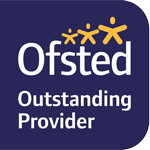Lucy Stevens - 15th July 2019

When fostering children, how do we ensure we keep children at the heart of everything we do?
Many foster carers are highly driven to provide child-centric care to the children they are fostering. This takes many forms from therapeutic fostering, advocacy, support in education and providing boundaries. And let’s not forget good old fashioned love and nurturing. All foster carers however need to work within the system and its associated requirements and constraints. It is within this arena that many foster carers see the child-centred approach turn on its heels and disappear.
Is a child centred approach to fostering children always adopted in meetings with professionals?
many foster carers see the child-centred approach turn on its heels and disappear.
Fostering involves meeting and liaising with the professionals who are responsible for fulfilling statutory obligations towards children. This is obviously an important part of the overall fostering picture. Professionals need to ensure that the needs of children are met in every area that forms a part of their care. And rightly so.
Fostering professionals perform a good deal of this box ticking during the Child in Care Review meeting (misguidedly acronymed to CIC). During this meeting a range of professionals and other individuals will be present. Often the child, the foster carer, birth parents, social workers, teachers or other advocates might sit together for all or part of the meeting. The aim of the CIC is to establish progress of the child in a number of areas. In addition to this professionals make plans for the future which will be reviewed at subsequent meetings. At their worst, they are an excruciatingly boring exercise in box ticking which means little or nothing to the child. In fact they can bear little relation to what is truly important to them. At their best they can be an opportunity for the children’s views to be heard and acted upon.
Anecdotally, children who are present for all or some of this meeting can struggle with the monotony of examining everything with a fine-toothed comb. They can feel scrutinised and vulnerable. One Eastern Fostering Services carer reports, “Our child would stay for the entire meeting. Whilst he was always keen to give his views on certain things, this took a relatively small part of the meeting. About mid-way through, his eyes would glaze over and I don’t think he once left a CIC review without a crushing headache. I suppose he and I saw it as a necessary evil.”
So how do we get it right for the children we’re fostering?
When fostering children, carers can feel it’s like the little girl with the curl in the middle of her forehead. Indeed when she is good she is very, very good and when she is bad she is horrid. Of course, all foster carers have some horror stories to tell. Furthermore, when things don’t work, we are quick to hear about it in the media or from colleagues. But sometimes the professionals do get it right and when they do, they get it very, very right.
The PATH to good fostering is not paved with gold.
It would be grossly unfair to suggest that the fostering journey is furnished with anything but good intentions; both on the part of foster carers and the myriad professionals responsible for the holistic care of children. However, whilst it is difficult to make statutory box ticking child-centric, children’s views can be heard. Suffolk Virtual School has developed excellent child-centred ways for their social workers, schools’ staff and foster carers to hear and act upon children’s views. The process that they use is called PATH (Planning Alternative Tomorrows with Hope). This was a process originally designed by Inclusive Solutions who trained Suffolk’s Psychology and Therapeutic Service to deliver the process to children and young people in conjunction with Virtual Schools.
“Two years on, it’s having an amazing impact,” says Dr Imogen Howarth of Health, Wellbeing and Children’s services, Suffolk. “Their latest Ofsted Inspection showcased dozens of PATHs across the county with Children and Young People’s services and schools being able to explain their PATH contents and how the children and young people’s views captured in the process were being translated into real world practice.”

How does PATH work?
PATH is a process that creates a vision of a positive future for the child which is shared with those who are important to them. This might be foster carers, birth family, social workers, therapists and teachers. It is completely child-centred and therefore is focussed on the young person and their very personal dreams for the future.
The session is delivered by a facilitator who guides people through each stage of outlining the dream and what needs to happen to make it a reality.
The first stage is to set out the dream. The child or young person is asked to verbalise their hopes and dreams for the future. There are no limitations or constraints during this part of the process and a good deal of time is spent in understanding the dream so that it can inform the rest of the PATH.
It was all about the child. There was so much positive feedback to build her esteem and you could see that she felt heard, loved and empowered.
The next part of the process involves some good old fashioned time travel as the group journey to a year from the present and articulate all the positives that will have been achieved in that year. Thereafter the child is brought back to the present to express how they feel about what is happening now.
The child will then identify some key individuals who they will need on their path. This list will invariably include all those who the child considers important to them and others who will be important in the realisation of their dream.
Goals and aspirations require strength and perseverance. The next stage of the process is to encourage the child to think about what they will need to stay strong. This might be the learning of new skills or the support of their carer. It might involve buy in and enthusiasm from the birth family or additional support from school.
Finally the child decides on their next steps. These steps might be large or small but aim to give very practical means for the child to make progress in the actualisation of their hopes and dreams.
Where does the PATH lead the child?
At the end of the session that was geared around the child our carers support, a beautiful piece of art had been produced. This masterpiece pictorially laid out the dreams and the path that would be taken. It was peppered with positive words and phrases that described all the attributes of the child and laid out a hopeful vision for the future. This art work takes pride of place on the child’s bedroom wall as a constant reminder of what the future might look like and a map of how to get there. No glazed eyes, no crushing headache, just the hope of what the future could look like and the very real possibility that she can make it happen.
“This was an amazing process to be part of,” says Samuel Perryman, Supervising Social Worker at Eastern Fostering Services. “It was all about the child. There was so much positive feedback to build her esteem and you could see that she felt heard, loved and empowered.”
No glazed eyes, no crushing headache, just the hope of what the future could look like and the very real possibility that she can make it happen.
For more information on PATH and the part it can play in supporting the positive fostering of children, click here.
For more information on the process, please contact IF@suffolk.gov.uk
If you would like to find out more about Eastern Fostering Services and the work we do in Suffolk, Essex and Cambridgeshire, visit us at www.eastern-fostering-services.com
Eastern Fostering Services - The small agency with a strong family feel
Tags: fostering, fostering children, fostering in Suffolk, fostering Suffolk, looked after children, Suffolk fostering






